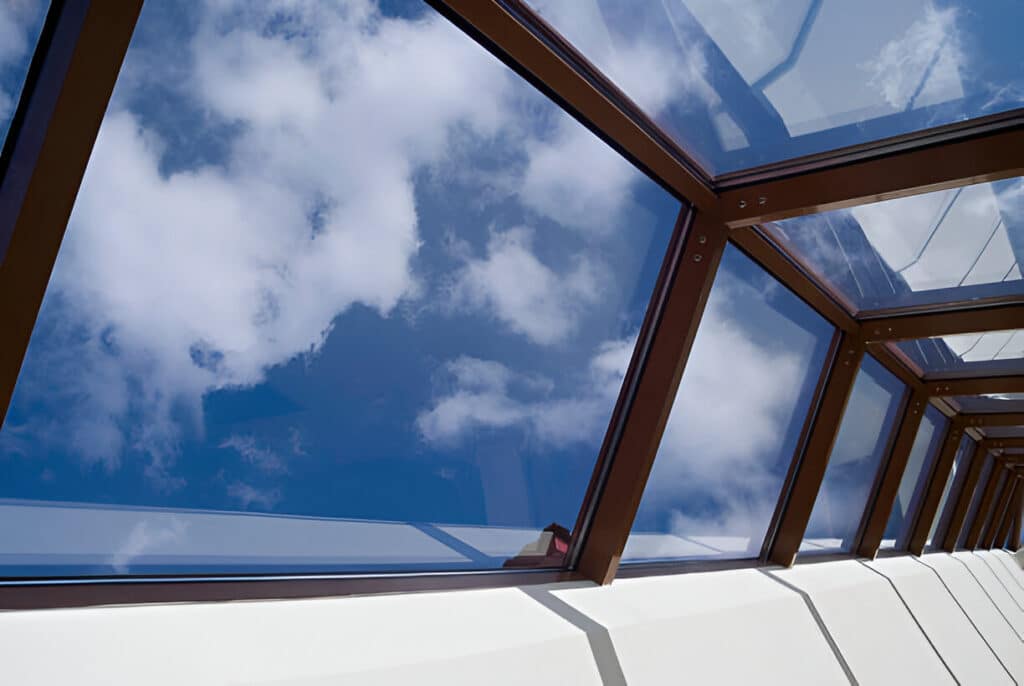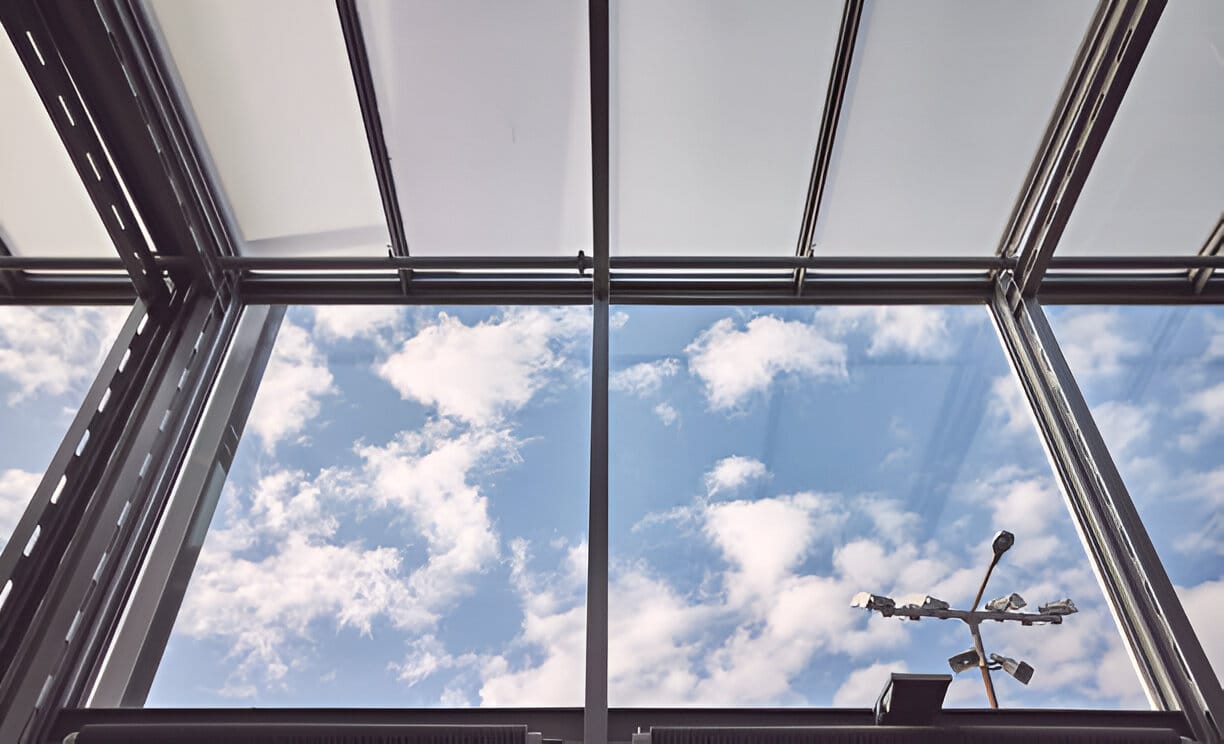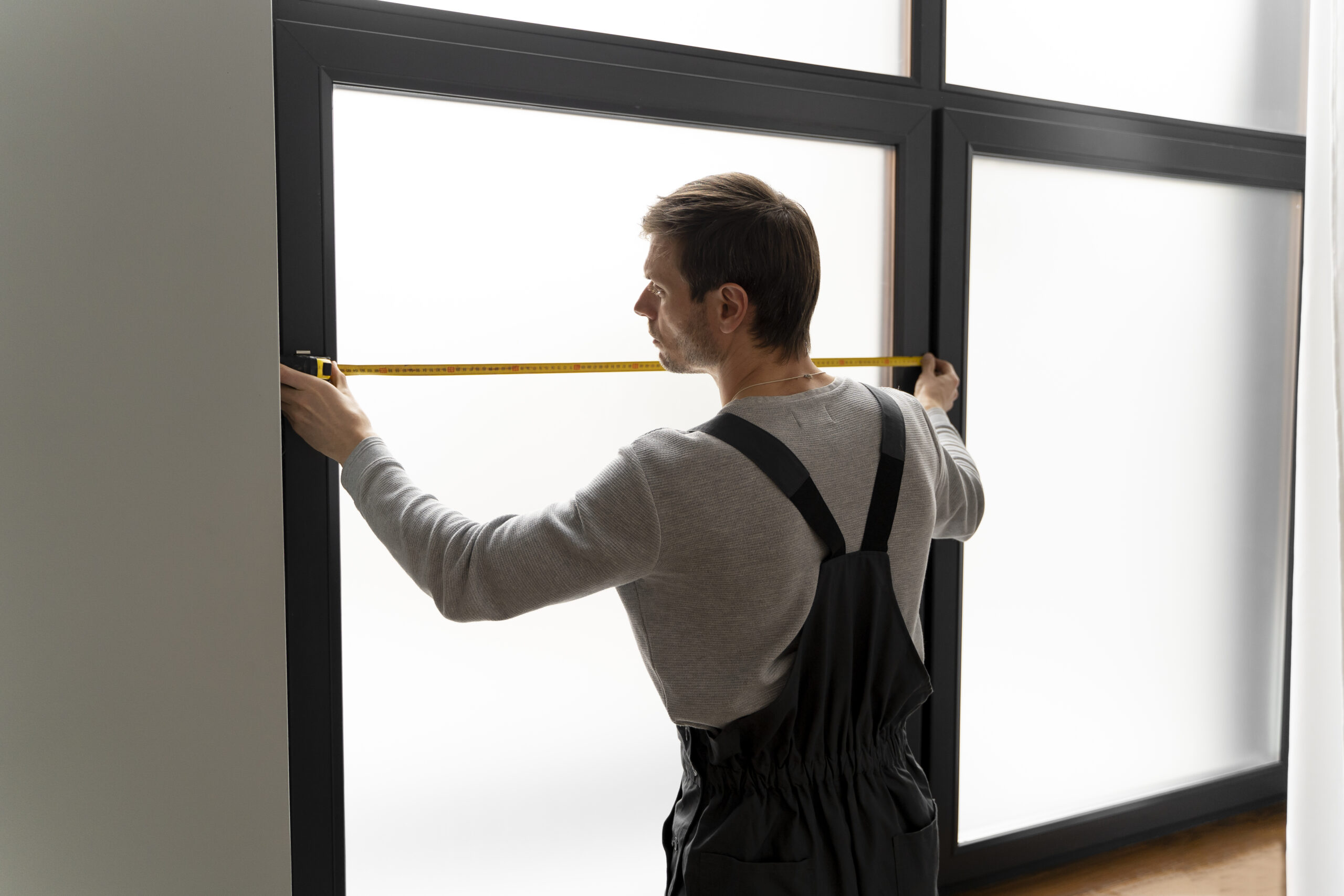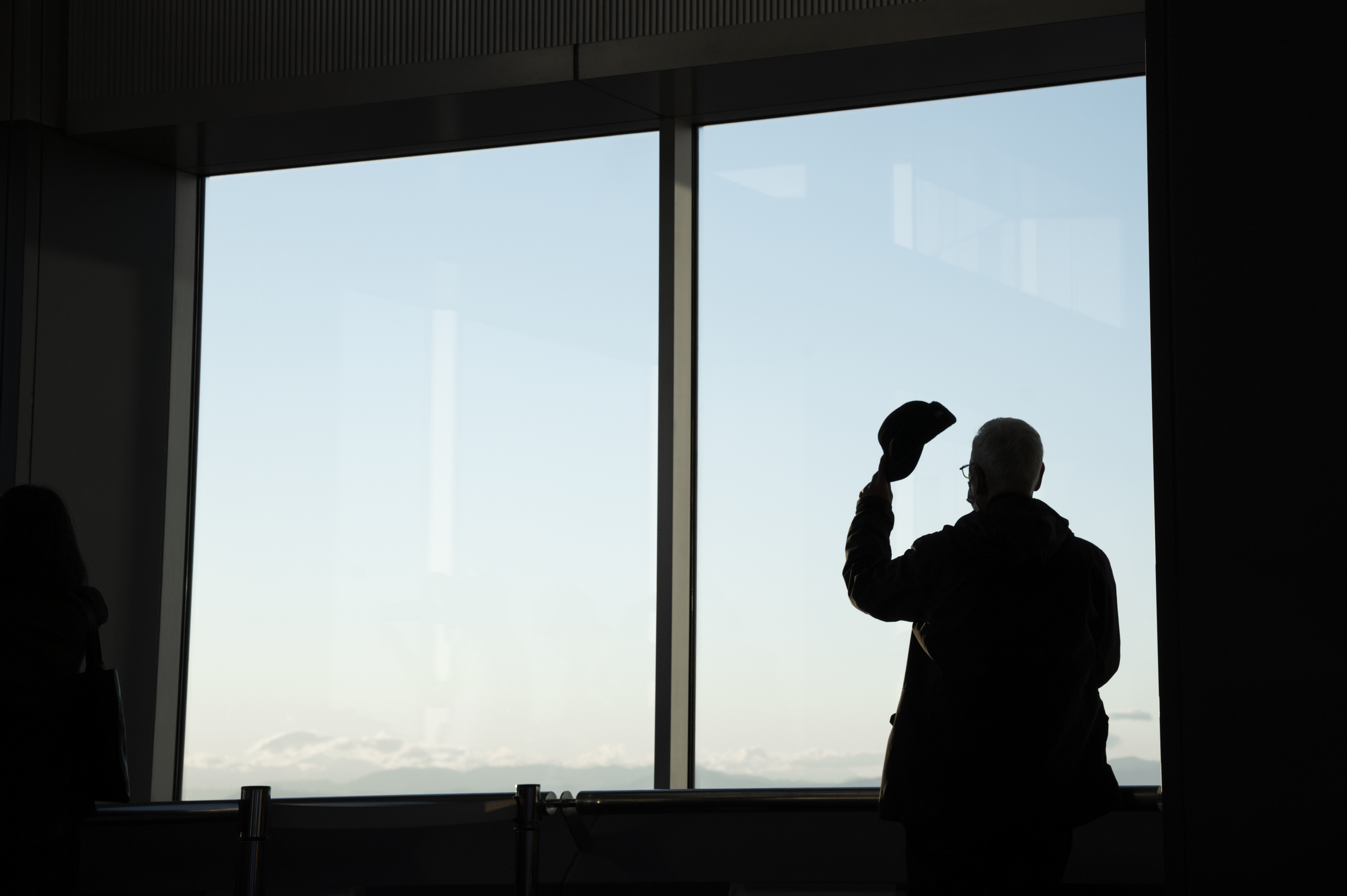Imagine a world where your windows instantly adjust to your privacy needs, changing from clear to frosted with just a tap on your smartphone. This isn’t a scene from a sci-fi movie – it’s the reality of smart window tinting technology.
Smart window tinting is a game-changer for home privacy solutions. These cutting-edge windows use advanced electrochromic technology to give homeowners complete control over their living spaces. No more manually adjusting blinds or curtains – now we have sophisticated glass systems that can change their transparency whenever we want.
The evolution of smart glass technology has been impressive. What started as basic switchable glass in high-end commercial buildings has now become an affordable privacy solution for homes.
Today’s smart window tinting offers:
- Instant privacy control through mobile apps
- Seamless integration with home automation systems
- UV protection for furniture and interior spaces
- Energy efficiency benefits
- Sleek, modern aesthetics
As homes become more connected, smart window tinting is leading the way in architectural innovation. This technology doesn’t just provide privacy – it represents a fundamental shift in how we interact with our living spaces.
The ability to control natural light and visibility at the touch of a button has opened up new possibilities for modern home design and lifestyle enhancement.
Understanding Smart Window Tinting Technology
Smart window tinting, also known as switchable glass or smart glass, represents a technological leap in window treatments. This innovative system uses liquid crystal film technology combined with electrical currents to transform glass from transparent to opaque states instantly.
How Smart Glass Works:
The science behind smart window tinting involves multiple layers:
- A thin liquid crystal film sandwiched between two transparent electrical conductors
- An electrical current that aligns or randomizes the liquid crystals
- A protective outer layer that ensures durability
When the system is powered off, the liquid crystals remain randomly oriented, creating an opaque, frosted appearance. Applying an electrical current causes these crystals to align, instantly turning the glass clear. This process can be controlled through:
- Wall-mounted switches
- Smartphone applications
- Home automation systems
- Motion sensors
Smart Tinting vs Traditional Window Treatments
Traditional window coverings like blinds and curtains present several limitations that smart tinting addresses:
| Traditional Solutions | Smart Tinting |
| Manual operation required | Button-controlled privacy |
| Physical wear and tear | No moving parts to maintain |
| Limited functionality | Multi-purpose capabilities |
| Fixed opacity levels | Adjustable transparency |
| Dust collection | Easy-to-clean surface |
The technology’s precision control allows users to adjust privacy levels without sacrificing natural light or dealing with physical barriers. Unlike conventional blinds or shades that block views entirely, smart tinting maintains a clean, modern aesthetic while providing effective privacy management.
Smart glass technology integrates seamlessly with existing window structures, eliminating the need for additional hardware or window treatments. This integration creates a sleek, minimalist appearance while offering superior functionality compared to traditional privacy solutions.
The system’s responsiveness to electrical signals enables rapid switching between clear and frosted states, providing immediate privacy when needed. This dynamic control surpasses the capabilities of traditional tinting films, which often offer only permanent solutions without the flexibility to adjust based on changing needs.
For those considering such innovative solutions for their homes, exploring options like residential window tinting in Miami could provide valuable insights into practical applications of this technology. Additionally, blog resources may offer further information on residential window tinting and its benefits.

Advantages of Smart Window Tinting for Homeowners
Smart window tinting transforms the way homeowners manage their living spaces, offering a suite of benefits that extend beyond basic privacy control.
1. On-Demand Privacy Management
With advanced window privacy film solutions, you can now have complete control over your privacy:
- Switch between transparent and opaque states in seconds
- Create instant privacy for specific rooms or areas
- Maintain clear views when desired
- Eliminate the need for traditional curtains or blinds
2. Enhanced UV Protection
Smart tinted windows block up to 99% of harmful UV rays, providing:
- Protection for furniture and flooring from sun damage
- Reduced fabric fading in carpets and upholstery
- Safer indoor environment for skin health
- Preservation of artwork and valuable interior items
3. Energy Efficiency Benefits
Smart window tinting acts as a dynamic climate control solution:
- Reduces solar heat gain by up to 85% in summer
- Decreases air conditioning costs by 20-30%
- Maintains natural light while blocking excess heat
- Provides additional insulation during winter months
4. Cost Savings Through Temperature Regulation
The intelligent design of smart tinted windows contributes to significant financial benefits:
- Lower monthly energy bills
- Reduced HVAC system strain
- Decreased need for artificial lighting
- Extended lifespan of climate control systems
5. User Control and Convenience
Modern smart tinting systems put control at your fingertips:
- Smartphone app integration
- Programmable schedules for automatic adjustments
- Zone-specific controls for different areas
- Voice command compatibility with smart home systems
6. Health and Comfort Improvements
The technology creates a more comfortable living environment by:
- Reducing glare on screens and surfaces, a common issue that can be mitigated with privacy window film
- Maintaining optimal indoor temperatures
- Protecting against harmful UV exposure
- Creating a balanced natural light environment
Smart window tinting represents a significant advancement in home comfort technology. The combination of energy efficiency, UV protection, and customizable privacy control creates an intelligent solution for modern living spaces. These features work together to enhance both the functionality and value of residential properties while providing homeowners with unprecedented control over their indoor environment.
The Versatility and Limitations of Smart Window Tinting
Smart window tinting technology extends far beyond residential applications, proving its worth across diverse commercial settings. Office buildings utilize these multi-functional windows to create dynamic meeting spaces that shift from transparent to private in seconds. Healthcare facilities implement smart tinting for patient privacy, while retail stores leverage the technology for striking product displays that adapt to different times of day.
Commercial Applications:
- Conference rooms with adjustable privacy settings
- Restaurant windows that automatically adjust based on sun position
- Hotel bathrooms featuring instant-privacy glass
- Museum displays protecting sensitive artifacts from UV damage
The adaptability of smart tinting makes it suitable for specialized environments:
- Educational institutions creating flexible learning spaces
- Broadcasting studios managing light conditions
- Research facilities requiring controlled environments
- Transportation hubs optimizing passenger comfort
While smart window tinting presents numerous advantages, potential buyers should consider several limitations:
Cost Considerations:
- Higher initial investment compared to traditional window treatments
- Professional installation requirements
- Possible electrical system modifications
- Regular maintenance and occasional calibration needs
Technical Limitations:
- Dependency on electrical systems
- Battery backup requirements for power outages
- Limited color options compared to conventional tinting
- Specific cleaning requirements to maintain functionality
The complexity of smart tinting systems necessitates professional installation. DIY attempts risk damaging the sophisticated electronics and potentially voiding warranties. The installation process involves:
- Electrical wiring integration
- Precise calibration of tinting mechanisms
- Professional testing of automation systems
- Setup of control interfaces and smart home connectivity
These considerations make smart window tinting a significant investment that requires careful planning and professional expertise to implement successfully.
Recent Innovations and Future Prospects in Smart Window Tinting Technology
Smart window tinting technology continues to evolve with groundbreaking innovations. The latest generation of smart films incorporates photochromic properties, enabling automatic opacity adjustments based on sunlight intensity. This self-regulating feature eliminates the need for manual control while maintaining optimal indoor lighting conditions throughout the day.
Key Technological Advancements:
- AI-powered opacity control systems that learn user preferences
- Voice-activated commands through virtual assistants
- Mobile app integration with advanced scheduling capabilities
- Solar-powered tinting solutions reducing energy consumption
The integration with home automation systems marks a significant leap forward. Smart window tinting now seamlessly connects with:
- Smart thermostats for temperature optimization
- Light sensors for automated brightness control
- Security systems for enhanced privacy protection
- Smart home hubs for centralized management
Research and development efforts focus on creating more responsive and energy-efficient solutions. Scientists are exploring nano-materials that offer faster tinting transitions and improved durability. These developments promise enhanced performance while reducing installation complexity.
The market shows growing interest in customizable zoning options, allowing homeowners to control different window sections independently. This granular control adapts to specific privacy needs and lighting preferences throughout different areas of the home.
Embracing Smart Living Solutions with Smart Window Tinting
Smart window tinting is a game-changer for turning regular homes into modern living spaces. This technology offers the perfect combination of privacy, comfort, and energy efficiency—key aspects of contemporary living.
Why Choose Smart Window Tinting?
Ready to enhance your home’s functionality? Here are some convincing reasons to consider smart window tinting:
- Enhanced Living Experience: Seamless control over natural light and privacy
- Future-Ready Investment: Integration with existing smart home systems
- Sustainable Choice: Reduced energy consumption and lower carbon footprint
The future of home technology is here, and smart window tinting is leading the way. By adding this cutting-edge solution, homeowners can create living spaces that adapt to their needs while staying ahead in the ever-changing world of smart home technology
The Benefits of Smart Window Solutions
For example, using UV window film not only improves privacy but also shields interiors from harmful UV rays. This is just one illustration of how smart window solutions can enhance living conditions.
Furthermore, smart window tinting can effortlessly connect with current smart home systems, making it a future-ready investment for homeowners seeking to boost their property’s value and functionality.
In addition, these solutions are also sustainable choices, significantly reducing energy consumption and carbon footprint, thus contributing positively to the environment.
FAQs (Frequently Asked Questions)
What is smart window tinting and how does it work?
Smart window tinting is an innovative technology that allows homeowners to control the opacity of their windows at the touch of a button. It utilizes electric currents to change the state of a liquid crystal film, enabling the glass to switch between transparent and opaque, thereby enhancing privacy.
How does smart window tinting compare to traditional window treatments?
Unlike traditional window treatments such as blinds or curtains, smart window tinting offers on-demand privacy without the need for physical manipulation. It provides a sleek, modern aesthetic while also allowing for instant adjustments in light and visibility, making it a unique solution for contemporary homes.
What are the benefits of smart window tinting for homeowners?
Smart window tinting offers numerous benefits including instant privacy, enhanced UV protection for interiors, and improved energy efficiency. By regulating indoor temperatures, it can lead to significant cost savings on energy bills while maintaining comfort within the home.
Are there any limitations to consider with smart window tinting?
Yes, while smart window tinting is versatile and beneficial, homeowners should consider its higher upfront costs compared to traditional options. Additionally, professional installation is typically required due to the complexity of the technology.
What recent innovations are being seen in smart window tinting technology?
Recent trends include advancements in films that can change opacity based on sunlight or user command. These innovations enhance convenience and reflect a growing interest in integrating smart window tinting into modern home automation systems.
How can I incorporate smart window tint solutions into my home?
To embrace smart living solutions, consider integrating smart window tinting as part of your home improvement projects. This technology not only enhances privacy but also contributes to creating a smarter and more comfortable living environment.



